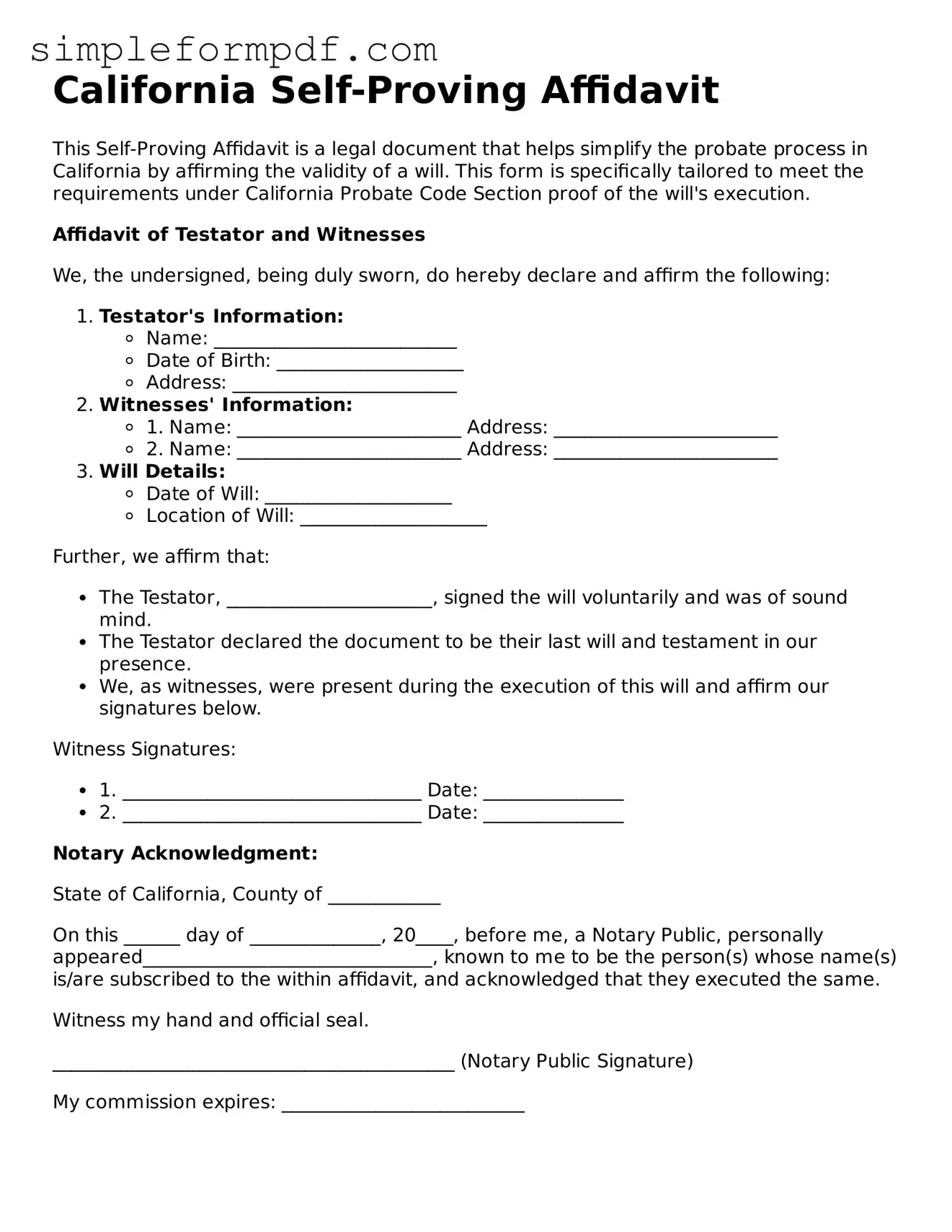California Self-Proving Affidavit
This Self-Proving Affidavit is a legal document that helps simplify the probate process in California by affirming the validity of a will. This form is specifically tailored to meet the requirements under California Probate Code Section proof of the will's execution.
Affidavit of Testator and Witnesses
We, the undersigned, being duly sworn, do hereby declare and affirm the following:
- Testator's Information:
- Name: __________________________
- Date of Birth: ____________________
- Address: ________________________
- Witnesses' Information:
- 1. Name: ________________________ Address: ________________________
- 2. Name: ________________________ Address: ________________________
- Will Details:
- Date of Will: ____________________
- Location of Will: ____________________
Further, we affirm that:
- The Testator, ______________________, signed the will voluntarily and was of sound mind.
- The Testator declared the document to be their last will and testament in our presence.
- We, as witnesses, were present during the execution of this will and affirm our signatures below.
Witness Signatures:
- 1. ________________________________ Date: _______________
- 2. ________________________________ Date: _______________
Notary Acknowledgment:
State of California, County of ____________
On this ______ day of ______________, 20____, before me, a Notary Public, personally appeared_______________________________, known to me to be the person(s) whose name(s) is/are subscribed to the within affidavit, and acknowledged that they executed the same.
Witness my hand and official seal.
___________________________________________ (Notary Public Signature)
My commission expires: __________________________
